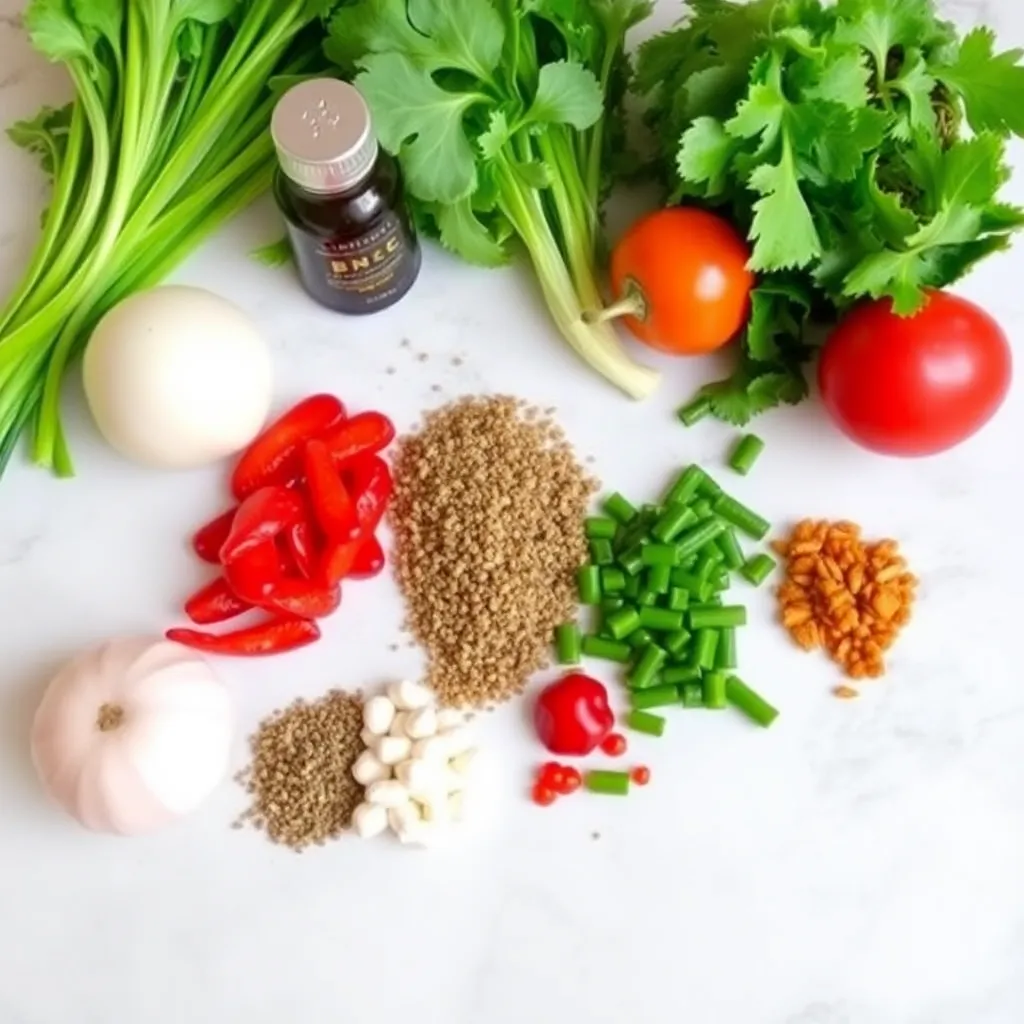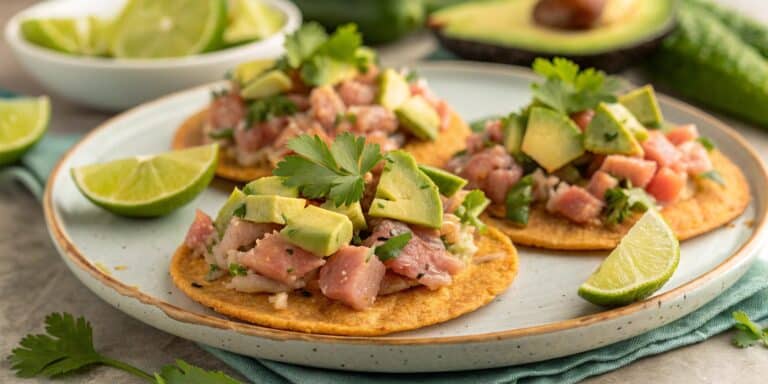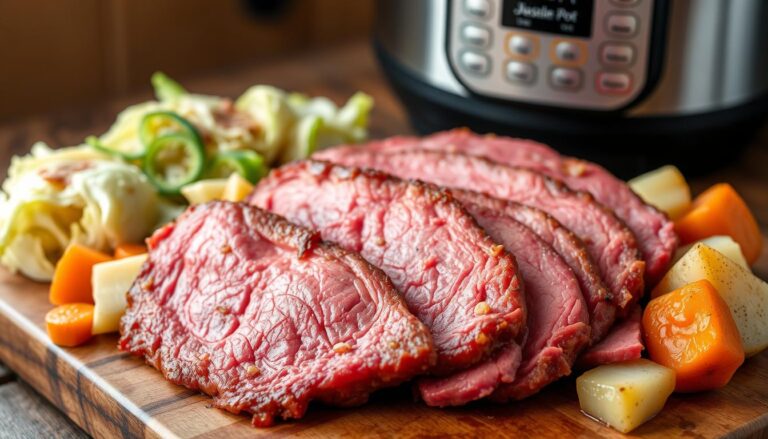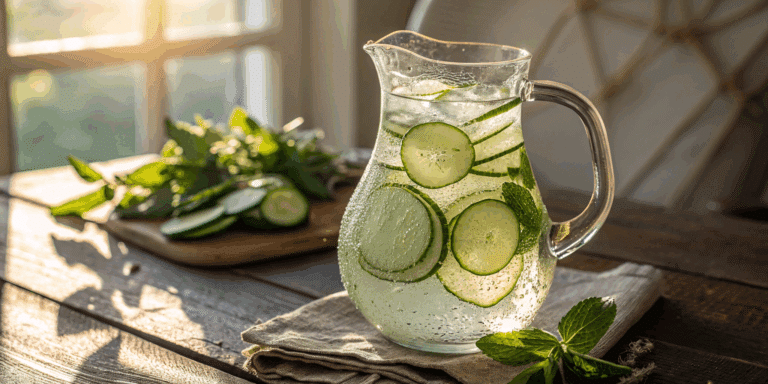Authentic Chinese Pepper Steak: China Wok’s Secret Recipe Revealed
Discover the mouthwatering combination of tender beef strips, crisp bell peppers, and savory sauce that makes Chinese Pepper Steak a beloved classic. This signature dish from China Wok restaurants brings authentic Asian flavors to your home kitchen.
This comprehensive guide explores the history, preparation techniques, and variations of this iconic Chinese-American dish. We’ll also share professional tips to achieve restaurant-quality results every time.
Key Takeaways
- Uncover the origins of Chinese Pepper Steak and its evolution in American Chinese cuisine
- Master the authentic China Wok recipe with step-by-step instructions
- Learn essential wok cooking techniques from professional chefs
- Discover key ingredients that create the perfect flavor balance
- Explore healthy adaptations and dietary variations
- Find tips for pairing and serving this classic dish
The Rich History of Chinese Pepper Steak
Chinese Pepper Steak represents the beautiful fusion of traditional Chinese cooking techniques with Western ingredients and preferences. Its journey from China to becoming a staple in Chinese restaurants across America reveals much about culinary adaptation and cultural exchange.
Origins and Cultural Significance
Pepper Steak’s roots can be traced to Cantonese cooking traditions, where the stir-frying technique perfectly preserves the texture and flavor of both meat and vegetables. The original dish used local Chinese ingredients, but as Chinese immigrants arrived in America in the 19th century, they adapted their recipes to incorporate available ingredients and appeal to American tastes.
The use of bell peppers—not native to traditional Chinese cooking—exemplifies this adaptation. These vibrant vegetables were incorporated to add color, texture, and a mild sweetness that complemented the savory beef. This innovation transformed a simple stir-fry into the beloved Pepper Steak we know today.
| Time Period | Key Developments |
|---|---|
| 1800s | Chinese immigrants arrive in America bringing cooking techniques |
| Early 1900s | Adaptation begins with local ingredients |
| 1920s-1940s | Chinese restaurants gain popularity in urban centers |
| 1950s-1960s | Chinese-American dishes become mainstream |
| Present Day | Authentic and fusion versions coexist in restaurants like China Wok |
Evolution in American Chinese Cuisine
The journey of Chinese Pepper Steak in America mirrors the evolution of Chinese restaurants themselves. Early establishments catered primarily to Chinese communities, offering traditional dishes. As these restaurants gained popularity with wider audiences, dishes like Pepper Steak emerged as crowd-pleasers that bridged cultural gaps.
Today, Pepper Steak holds a special place in Chinese-American cuisine. It represents the perfect balance between authenticity and adaptation—maintaining core Chinese cooking principles while embracing American ingredients and preferences. At restaurants like China Wok, chefs continue this tradition, creating dishes that honor their cultural heritage while welcoming new diners to experience these beloved flavors.
Why Chinese Pepper Steak is a Fan Favorite
Chinese Pepper Steak has earned its place among the most ordered items at China Wok restaurants and Chinese establishments nationwide. This popularity isn’t just about flavor—it’s about the complete dining experience and versatility the dish offers.
Perfect Flavor Balance
The magic of Chinese Pepper Steak lies in its harmonious blend of flavors and textures. Tender beef strips deliver rich umami notes, while colorful bell peppers provide sweet, slightly bitter counterpoints. The sauce ties everything together—savory, slightly sweet, with aromatic undertones from garlic, ginger, and soy sauce.
This balance appeals to a wide range of palates, making it accessible to newcomers to Chinese cuisine while satisfying experienced diners. The dish demonstrates the Chinese culinary principle of balance, where contrasting elements create harmony rather than competition.
“The perfect Pepper Steak should have tender beef that melts in your mouth, crisp vegetables that retain their color and texture, and a sauce that’s flavorful but doesn’t overpower the main ingredients.” – Master Chef at China Wok
Versatility for Any Occasion
Pepper Steak’s versatility makes it perfect for numerous dining scenarios:
| Occasion | Why Pepper Steak Works |
|---|---|
| Family Dinners | Crowd-pleasing flavor appeals to all ages |
| Business Lunches | Quick preparation with impressive presentation |
| Casual Gatherings | Easy to serve family-style |
| Special Celebrations | Can be elevated with premium ingredients |
Whether you’re ordering takeout from your local China Wok or preparing it at home for guests, Pepper Steak delivers consistent satisfaction while adapting to the formality of any occasion.
Essential Ingredients for Authentic Chinese Pepper Steak
Creating truly exceptional Chinese Pepper Steak requires careful attention to ingredient selection. Each component contributes to the distinctive flavor profile that makes this dish a standout at China Wok restaurants.
Selecting the Perfect Cut of Beef
The foundation of great Pepper Steak is the beef itself. Different cuts offer varying levels of tenderness, flavor, and cost.
Premium vs. Economical Cuts
For restaurant-quality results, flank steak and sirloin are preferred choices. Flank steak offers excellent flavor with a distinct texture, while sirloin provides tenderness with rich beef flavor. Budget-conscious cooks can use chuck steak, which becomes tender when properly sliced and marinated.
Regardless of the cut chosen, the slicing technique is crucial. Always cut against the grain in thin strips (about ¼ inch thick) to ensure tenderness. This technique breaks down muscle fibers, resulting in beef that practically melts in your mouth.
Fresh Peppers and Aromatics
The vibrant peppers in this dish are more than just colorful garnishes—they’re co-stars that provide essential flavor dimensions.
Bell Pepper Varieties
Using multiple bell pepper colors (red, green, yellow) creates visual appeal and subtle flavor variations. Red peppers offer sweetness, green provide slight bitterness, and yellow contribute a mild, fruity profile. For an authentic China Wok experience, peppers should be sliced into strips that maintain some crispness after cooking.
Critical aromatics include fresh garlic and ginger, which form the aromatic foundation of the dish. Using freshly minced versions rather than pre-packaged options significantly enhances the flavor profile.
The Secret to Perfect Sauce
The sauce is what transforms basic stir-fried ingredients into the distinctive Chinese Pepper Steak experience.
| Ingredient | Role in the Sauce | Authentic Option |
|---|---|---|
| Soy Sauce | Provides savory base and color | Light Chinese soy sauce |
| Oyster Sauce | Adds complexity and umami | Premium oyster sauce with high oyster extract |
| Chinese Black Vinegar | Balances with subtle acidity | Chinkiang vinegar |
| Chinese Cooking Wine | Removes gaminess from beef | Shaoxing wine |
| Cornstarch | Thickens sauce to proper consistency | Potato starch for clearer finish |
The perfect sauce should coat the ingredients without pooling in the plate—achieving this balance requires controlling the cornstarch amount and cooking temperature.
Kitchen Equipment for Wok Perfection
Achieving restaurant-quality Chinese Pepper Steak at home requires not just the right ingredients but also proper equipment. The right tools make all the difference in texture, flavor development, and overall authenticity.
The Importance of a Good Wok
The wok is the quintessential tool for Chinese stir-frying, offering unique advantages that directly impact your Pepper Steak’s quality.
Traditional vs. Modern Options
Traditional carbon steel woks develop natural non-stick properties and impart “wok hei”—the distinctive smoky flavor prized in Chinese cooking. Modern non-stick woks offer convenience but sacrifice some authentic flavor characteristics. For the most authentic China Wok experience, a well-seasoned carbon steel wok with a round bottom is ideal.
When using a wok, proper technique matters as much as the wok itself. The characteristic tossing motion aerates ingredients and ensures even cooking without breaking delicate vegetables or overcooking the beef.
Essential Tools for Preparation
Beyond the wok itself, several tools facilitate proper preparation:
- Sharp Chef’s Knife: Essential for precisely slicing beef against the grain
- Cutting Board with Juice Groove: Captures beef juices that would otherwise be lost
- Wok Spatula: Specially designed for tossing ingredients in a wok’s curved surface
- High BTU Burner: Provides the intense heat necessary for proper stir-frying
These tools work together to create the conditions for perfect stir-frying—quick cooking that seals in flavors while maintaining distinct textures.
Heat Control Techniques
Understanding heat management separates amateur efforts from China Wok quality results:
- Preheat the wok until it just begins to smoke
- Add oil and swirl to coat the cooking surface
- Start with aromatics at high heat to infuse the oil
- Add beef in small batches to maintain temperature
- Remove beef slightly before fully cooked
- Stir-fry vegetables quickly at high heat
- Return beef to wok with sauce ingredients
- Reduce heat to medium when thickening sauce
This precise heat control sequence ensures each ingredient receives appropriate cooking while preserving distinct textures and flavors.

Classic Chinese Pepper Steak Recipe
This authentic recipe recreates the beloved China Wok version of Pepper Steak. Follow these precise instructions for restaurant-quality results in your home kitchen.
Ingredient List and Measurements
For the Beef Marinade:
- 1 pound flank steak, thinly sliced against the grain
- 1 tablespoon Shaoxing wine (or dry sherry)
- 1 tablespoon light soy sauce
- 1 teaspoon cornstarch
- ½ teaspoon baking soda (for tenderizing)
- 1 teaspoon vegetable oil
For the Sauce:
- 3 tablespoons light soy sauce
- 1 tablespoon dark soy sauce (for color)
- 2 tablespoons oyster sauce
- 1 teaspoon Chinese black vinegar
- 1 teaspoon sugar
- ½ teaspoon ground black pepper
- ¼ cup chicken stock or water
- 2 teaspoons cornstarch
For Stir-Frying:
- 3 tablespoons vegetable oil (divided)
- 1 red bell pepper, sliced into strips
- 1 green bell pepper, sliced into strips
- 1 yellow bell pepper, sliced into strips
- 1 medium onion, sliced
- 3 cloves garlic, minced
- 1 tablespoon fresh ginger, minced
- 2 green onions, cut into 1-inch pieces
Step-by-Step Preparation Instructions
Marinating the Beef
Properly marinating the beef is crucial for authentic texture and flavor:
- Slice the beef against the grain into ¼-inch thick strips
- Combine all marinade ingredients in a bowl, mixing well
- Add beef strips and massage gently to coat evenly
- Let marinate for at least 30 minutes (up to 2 hours in refrigerator)
The baking soda in this marinade is a restaurant secret that tenderizes the beef, giving it that “melt-in-your-mouth” quality found in professional kitchens.
Preparing the Sauce and Vegetables
While the beef marinates, prepare the other components:
- Mix all sauce ingredients in a small bowl, ensuring cornstarch is fully dissolved
- Wash and slice all vegetables, keeping them separate
- Arrange workspace for efficient cooking—all ingredients should be within reach
The Stir-Fry Process
The actual cooking happens quickly, so being prepared is essential:
- Heat wok over high heat until smoking slightly
- Add 2 tablespoons oil, swirling to coat sides
- Add beef in a single layer (working in batches if necessary)
- Cook for 1-2 minutes until beef is 80% done but still slightly pink inside
- Remove beef to a plate, leaving any juices in the wok
- Add remaining 1 tablespoon oil
- Add ginger and garlic, stir for 10 seconds until fragrant
- Add bell peppers and onion, stir-fry for 1-2 minutes until crisp-tender
- Return beef to wok, including any accumulated juices
- Stir sauce mixture once more, then pour into wok
- Toss everything together until sauce thickens and becomes glossy (about 30 seconds)
- Add green onions and toss briefly
- Transfer to serving plate immediately
Tips for Achieving Authentic China Wok Flavor and Texture
Professional chefs at China Wok restaurants employ specific techniques that home cooks can adopt to elevate their Pepper Steak from good to exceptional.
Professional Secrets for Tender Beef
The hallmark of great Chinese Pepper Steak is beef that’s tender yet maintains its integrity. Achieve this with these professional techniques:
- Velveting: After marinating, briefly blanch the beef in hot oil or water before stir-frying
- Temperature Management: Allow beef to reach room temperature before cooking
- Hot Wok, Cold Oil: Heat the wok first, then add oil just before adding beef
- Single-Layer Cooking: Avoid overcrowding the wok to prevent steaming instead of searing
- 80% Rule: Remove beef from wok when it’s 80% cooked to prevent toughening
These techniques ensure beef that’s tender while maintaining a satisfying bite—exactly what you’d experience at China Wok.
Achieving the Perfect Sauce Consistency
The sauce should gloriously coat each ingredient without being too thick or runny:
- Mix Cornstarch Thoroughly: Always dissolve completely in liquid before adding to the wok
- Timing Matters: Add sauce mixture when ingredients are almost done cooking
- The 30-Second Rule: Once sauce is added, cook for no more than 30 seconds
- Constant Motion: Keep ingredients moving to promote even sauce distribution
- Steam Utilization: Cover wok for 5-10 seconds if needed to help thicken sauce
The perfect sauce transforms good ingredients into a cohesive, memorable dish that rivals any restaurant version.
Troubleshooting Common Issues
Even experienced cooks encounter challenges when making Chinese Pepper Steak. Here are solutions to common problems:
| Issue | Possible Cause | Solution |
|---|---|---|
| Tough Beef | Improper slicing or overcooking | Slice thinner against grain; reduce cooking time |
| Watery Sauce | Vegetables releasing too much moisture | Pre-cook vegetables separately; increase cornstarch slightly |
| Burnt Garlic Taste | Too high heat or adding garlic too early | Add garlic with ginger just before vegetables |
| Peppers Too Soft | Overcooking or cutting too small | Larger pieces; shorter cooking time |
| Bland Flavor | Insufficient seasoning or wok not hot enough | Increase aromatics; ensure wok is properly heated |
Chinese Pepper Steak for Dietary Preferences
One of the advantages of Chinese Pepper Steak is its adaptability to various dietary needs without sacrificing authenticity or flavor.
Gluten-Free Adaptations
Making gluten-free Chinese Pepper Steak requires attention to just a few key ingredients:
- Soy Sauce: Replace traditional soy sauce with certified gluten-free tamari
- Oyster Sauce: Choose gluten-free versions (some contain wheat)
- Chinese Cooking Wine: Substitute dry sherry or gluten-free rice wine
- Thickener: Verify cornstarch is pure and not blended with wheat flour
These simple substitutions maintain the dish’s integrity while making it safe for those with gluten sensitivity or celiac disease.
Vegetarian and Plant-Based Options
Creating meatless versions of Pepper Steak allows everyone to enjoy this classic:
Protein Alternatives
Several plant-based options work well in place of beef:
- Extra-firm tofu, pressed and sliced
- Seitan (wheat gluten), if gluten is not a concern
- Tempeh, for a nutty flavor profile
- Portobello mushrooms, sliced into strips
When using plant proteins, adjust cooking techniques slightly:
- Pre-bake or pan-fry tofu before stir-frying
- Reduce cooking time for mushrooms to prevent excessive moisture release
- Increase marinade time for better flavor absorption
Lower-Sodium Variations
Traditional Chinese Pepper Steak can be high in sodium due to soy sauce and oyster sauce. For those watching sodium intake:
- Use low-sodium soy sauce (reducing sodium by up to 40%)
- Dilute sauces with additional unsalted broth
- Increase fresh ingredients like ginger and garlic for flavor without salt
- Add a splash of rice vinegar to brighten flavors naturally
These modifications create a heart-healthier version while maintaining the essential character of the dish.
Delicious Variations of Chinese Pepper Steak
While the classic recipe remains a favorite, China Wok restaurants and creative home cooks have developed numerous variations that put unique spins on this beloved dish.
Regional Chinese Influences
Different regions of China inspire variations with distinct flavor profiles:
Szechuan-Style Spicy Version
This fiery adaptation incorporates the bold flavors of China’s Sichuan province:
- Add dried red chilies and Sichuan peppercorns for numbing heat
- Incorporate doubanjiang (spicy bean paste) into the sauce
- Include preserved vegetables for complex flavor layering
- Finish with a drizzle of chili oil for extra heat
Cantonese Sweet and Savory Approach
This gentler version emphasizes balance and subtlety:
- Increase oyster sauce for richer umami notes
- Add a touch of honey or rock sugar for delicate sweetness
- Include water chestnuts for textural contrast
- Finish with a sprinkle of white pepper rather than black
Creative Protein Substitutions
While beef is traditional, other proteins create interesting variations:
| Protein | Flavor Profile | Cooking Adjustment |
|---|---|---|
| Chicken Breast | Lighter, adapts well to sauce | Reduce cooking time to prevent drying |
| Shrimp | Sweet, pairs well with peppers | Add last minute to avoid overcooking |
| Pork Tenderloin | Slightly sweet, tender texture | Similar cooking time to beef |
| Lamb | Robust, stands up to bold seasonings | Increase marinade time for tenderizing |
Fusion Interpretations
Contemporary chefs have created fusion versions that blend Chinese techniques with other culinary traditions:
- Mexican-Chinese Fusion: Incorporate cumin, cilantro, and a splash of lime juice
- Korean-Inspired: Add gochujang and kimchi for a spicy, fermented twist
- Thai Influence: Include Thai basil, fish sauce, and a touch of coconut milk
- Japanese Adaptation: Use sake, mirin, and finish with a sprinkle of togarashi
These creative interpretations demonstrate how Chinese Pepper Steak continues to evolve while maintaining its essential character.
Nutritional Information and Health Benefits
Understanding the nutritional profile of Chinese Pepper Steak helps diners make informed choices while appreciating the potential health benefits of this flavorful dish.
Calorie and Macronutrient Breakdown
A typical serving of Chinese Pepper Steak contains:
| Nutrient | Amount per Serving | % Daily Value* |
|---|---|---|
| Calories | 320-380 | 16-19% |
| Protein | 25-30g | 50-60% |
| Carbohydrates | 15-20g | 5-7% |
| Fat | 18-22g | 23-28% |
| Sodium | 800-1200mg | 35-52% |
| Fiber | 3-5g | 11-18% |
*Based on a 2,000 calorie diet
The nutritional profile varies based on preparation methods, with restaurant versions typically containing more oil and sodium than homemade adaptations.
Health-Promoting Ingredients
Despite concerns about restaurant Chinese food, properly prepared Pepper Steak contains several health-promoting components:
- Bell Peppers: Rich in vitamins A and C, antioxidants that support immune function
- Lean Beef: Excellent source of high-quality protein, iron, zinc, and B vitamins
- Garlic and Ginger: Contain compounds with anti-inflammatory and antimicrobial properties
- Green Onions: Provide allium compounds associated with heart health
When prepared with moderate oil and sodium, Chinese Pepper Steak can be part of a balanced diet.
Making Healthier Choices
For those watching their caloric or sodium intake, consider these modifications:
- Increase the vegetable-to-meat ratio for more fiber and nutrients with fewer calories
- Request “light oil” when ordering at China Wok or similar restaurants
- Serve with brown rice instead of white for additional fiber and nutrients
- Add extra vegetables like mushrooms or snow peas for more volume with minimal calories
These simple adjustments can transform Chinese Pepper Steak into an even more nutritious option.
Serving and Pairing Suggestions
Presentation and accompaniments significantly enhance the Chinese Pepper Steak dining experience, whether at a China Wok restaurant or your home table.
Traditional Accompaniments
Several classic side dishes complement the flavors of Pepper Steak:
Rice Options
White rice is the traditional choice, providing a neutral canvas for the flavorful sauce. For additional nutrition, consider:
- Jasmine rice for a subtle fragrance
- Brown rice for added fiber
- Fried rice for a more substantial meal
- Cauliflower rice for a lower-carb alternative
Soup and Appetizer Pairings
Complete the meal with traditional starters:
- Hot and sour soup provides contrasting flavors
- Egg drop soup offers a gentle complement
- Spring rolls add textural contrast
- Steamed dumplings create a feast-like experience
Wine and Beverage Pairings
The right beverage can elevate Chinese Pepper Steak to new heights:
| Beverage | Why It Works |
|---|---|
| Gewürztraminer | Aromatic with slight sweetness that balances savory sauce |
| Riesling | Acidity cuts through richness while complementing bell peppers |
| Pinot Noir | Light-bodied red that won’t overpower the dish |
| Jasmine Tea | Traditional pairing that cleanses the palate |
| Plum Wine | Sweet-tart profile matches Chinese flavor principles |
Presentation Tips for Impressive Serving
For restaurant-quality presentation:
- Serve on a pre-warmed plate to maintain proper temperature
- Arrange beef and peppers in the center with rice to one side
- Garnish with thinly sliced green onions or sesame seeds
- Provide small dishes of chili oil or additional sauce on the side
- Use chopsticks and a Chinese soup spoon for authentic dining experience
These details transform a simple meal into a memorable dining occasion.
Finding the Best Chinese Pepper Steak Near You
For times when cooking at home isn’t an option, knowing how to find excellent Chinese Pepper Steak at restaurants is valuable knowledge.
What to Look for in Quality Chinese Restaurants
Not all Chinese restaurants create Pepper Steak with the same attention to quality. Here are indicators of establishments likely to serve exceptional versions:
- Wok Aroma: Upon entering, you should detect the distinctive smell of properly seasoned woks
- Chinese Clientele: A strong indicator of authentic preparation methods
- Fresh Ingredients: Visible vegetable preparation areas suggest fresh components
- Specialized Menu: Restaurants focusing on specific regional cuisines often excel
- Chef Credentials: Information about chef training or regional specialization
China Wok restaurants with these characteristics typically offer superior Pepper Steak experiences.
Reading Between the Lines on Menus
Menu descriptions can reveal much about the quality you can expect:
| Menu Description | What It Suggests |
|---|---|
| “Fresh bell peppers” | Vegetables are not pre-cut or frozen |
| “Wok-seared beef” | Proper high-heat cooking technique |
| “House-made sauce” | Sauces prepared in-house rather than pre-packaged |
| Regional designation (e.g., “Cantonese style”) | Specific traditional preparation method |
These menu cues help identify restaurants likely to serve exceptional Pepper Steak.
Tips for Ordering and Customization
When ordering Pepper Steak at restaurants like China Wok:
- Request beef preparation preferences (e.g., “extra tender” or “medium rare”)
- Specify heat level if options exist
- Ask about sauce modifications (e.g., “light sauce” or “extra savory”)
- Inquire about vegetable substitutions or additions
- Consider ordering family-style with complementary dishes
Most quality restaurants welcome reasonable customization requests, allowing you to tailor the dish to your preferences.
Conclusion
Chinese Pepper Steak stands as a shining example of culinary cultural exchange—a dish that honors traditional Chinese cooking techniques while embracing adaptation and evolution. Whether enjoyed at an authentic China Wok restaurant or prepared in your home kitchen, its harmonious blend of tender beef, crisp vegetables, and savory sauce continues to delight diners worldwide.
This comprehensive guide has explored everything from the dish’s fascinating history to professional cooking techniques and creative variations. Armed with these insights, you’re ready to appreciate, order, or prepare Chinese Pepper Steak with newfound knowledge and skill.
The next time you savor this beloved dish, you’ll recognize the careful balance of ingredients, the skilled wok techniques, and the cultural heritage on your plate. Chinese Pepper Steak isn’t just a meal—it’s a culinary journey worth taking again and again.
FAQ
What is the best cut of beef for Chinese Pepper Steak?
Flank steak is the preferred choice for authentic Pepper Steak due to its flavor and texture when properly sliced against the grain. Sirloin is an excellent alternative that offers tenderness with rich beef flavor.
Can I make Chinese Pepper Steak without a wok?
Yes, you can use a large, heavy skillet instead. While you won’t achieve the exact “wok hei” flavor, you can still create delicious Pepper Steak by working in small batches and maintaining high heat.
How do restaurants get their beef so tender in Pepper Steak?
Professional kitchens use a technique called “velveting” where meat is marinated with cornstarch and often baking soda, then briefly blanched in hot oil or water before the final stir-fry. This creates exceptionally tender beef.
Is Chinese Pepper Steak gluten-free?
Traditional Pepper Steak contains soy sauce and sometimes oyster sauce, which contain gluten. However, it’s easily adapted to be gluten-free by substituting tamari for soy sauce and choosing gluten-free oyster sauce alternatives.
How long does Chinese Pepper Steak keep in the refrigerator?
Properly stored in an airtight container, Pepper Steak keeps for 3-4 days in the refrigerator. The flavors often improve after resting overnight as the sauce penetrates the ingredients.
Can Chinese Pepper Steak be frozen?
Yes, though the peppers will lose some crispness after thawing. For best results, slightly undercook the peppers before freezing, and store in airtight containers for up to 2 months.
What’s the difference between Pepper Steak and Mongolian Beef?
Pepper Steak features bell peppers as the primary vegetable with a savory, slightly peppery sauce. Mongolian Beef typically includes green onions instead of bell peppers and has a sweeter, more intense sauce often featuring hoisin.
Is Chinese Pepper Steak healthy?
When prepared with lean beef, fresh vegetables, and moderate oil and sodium, Pepper Steak can be part of a healthy diet. It provides protein, vitamins, and minerals, though restaurant versions may contain more sodium and fat than homemade.
What vegetables can I add to traditional Pepper Steak?
Common additions include mushrooms, snow peas, water chestnuts, and bamboo shoots. These maintain the dish’s authentic character while adding nutritional value and textural interest.
What makes China Wok’s Pepper Steak special compared to other restaurants?
China Wok restaurants typically maintain traditional cooking techniques, including properly seasoned woks, high-heat cooking, and balanced sauce formulations that highlight rather than mask the main ingredients’ flavors.







